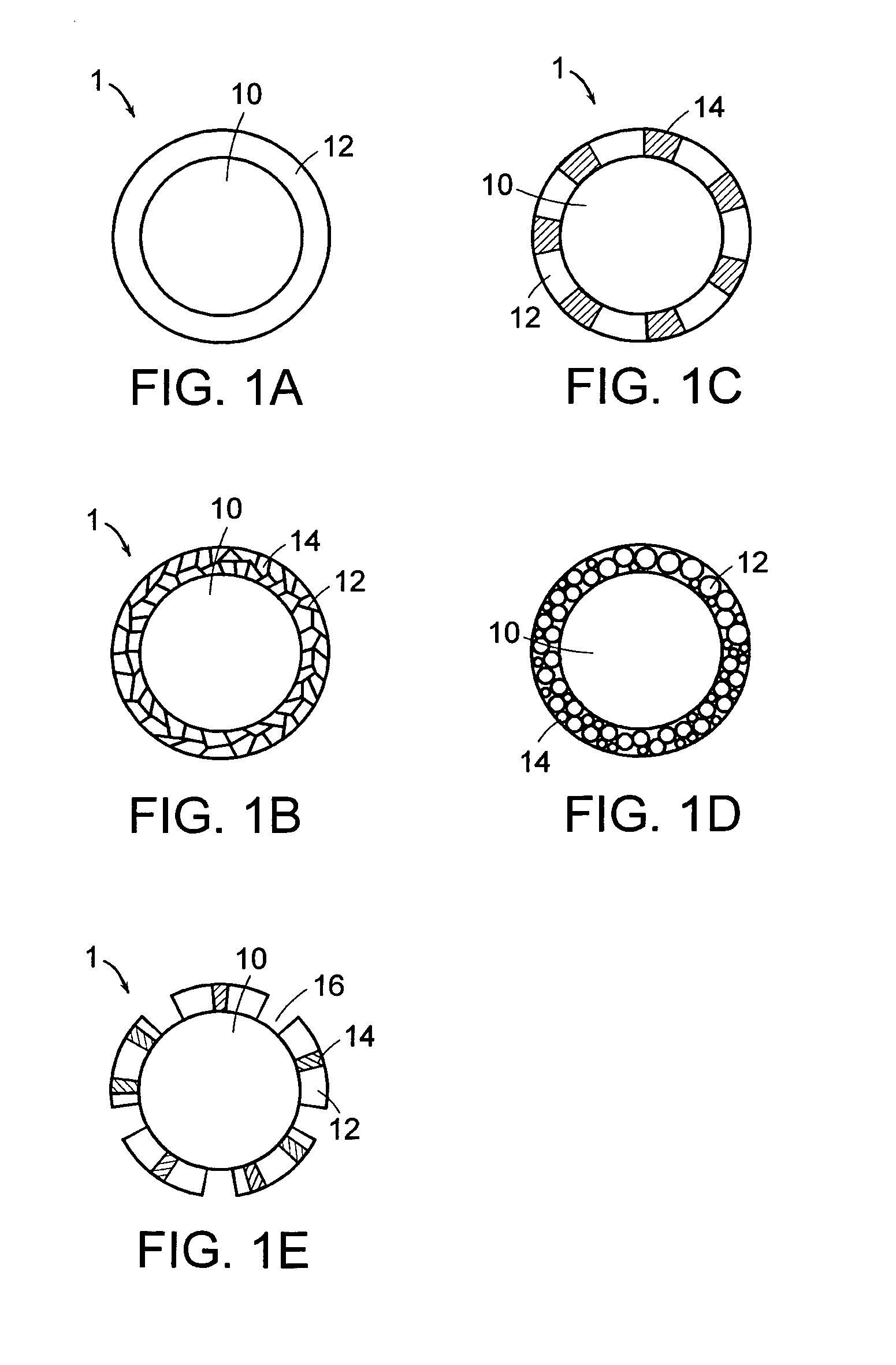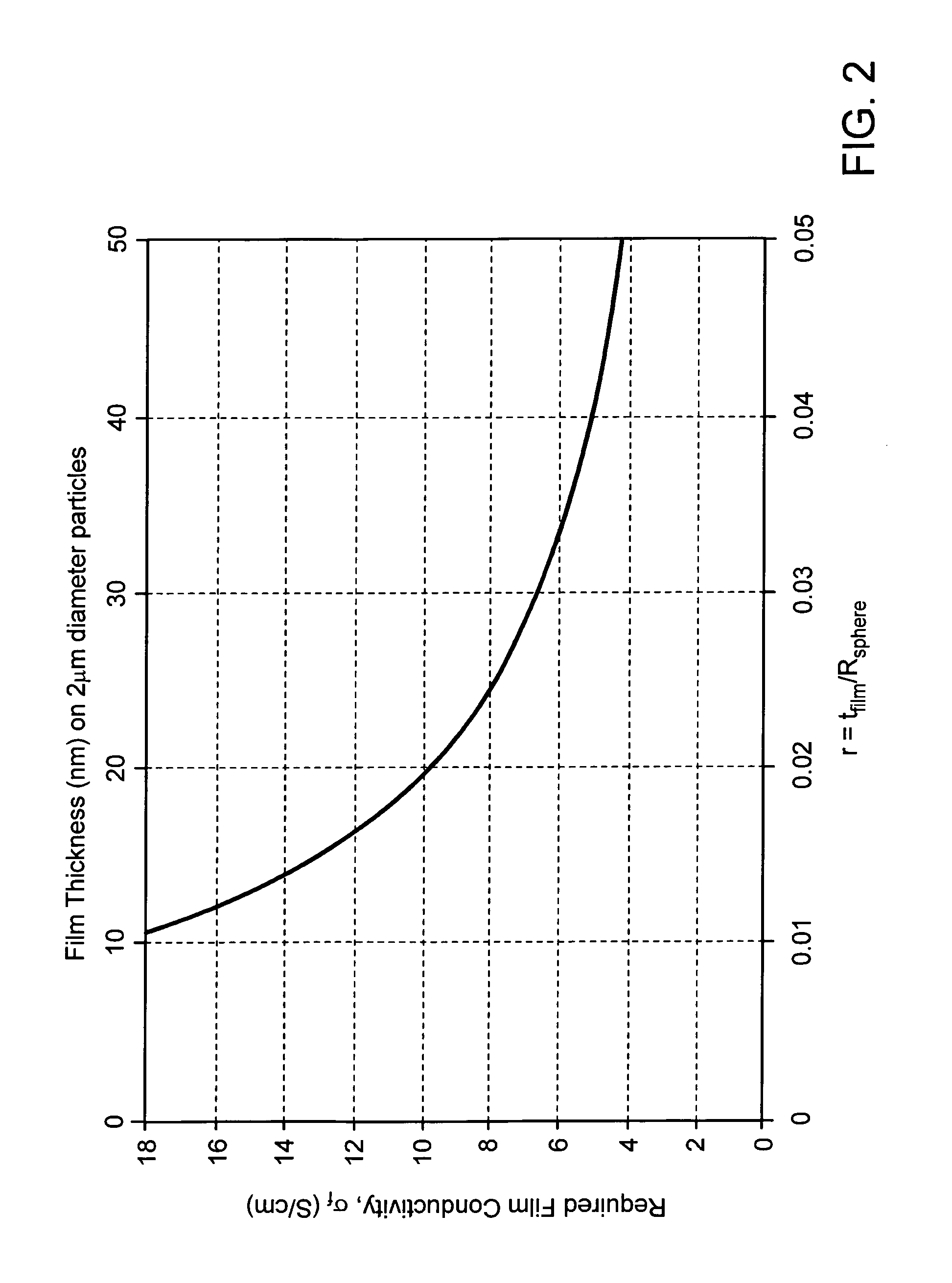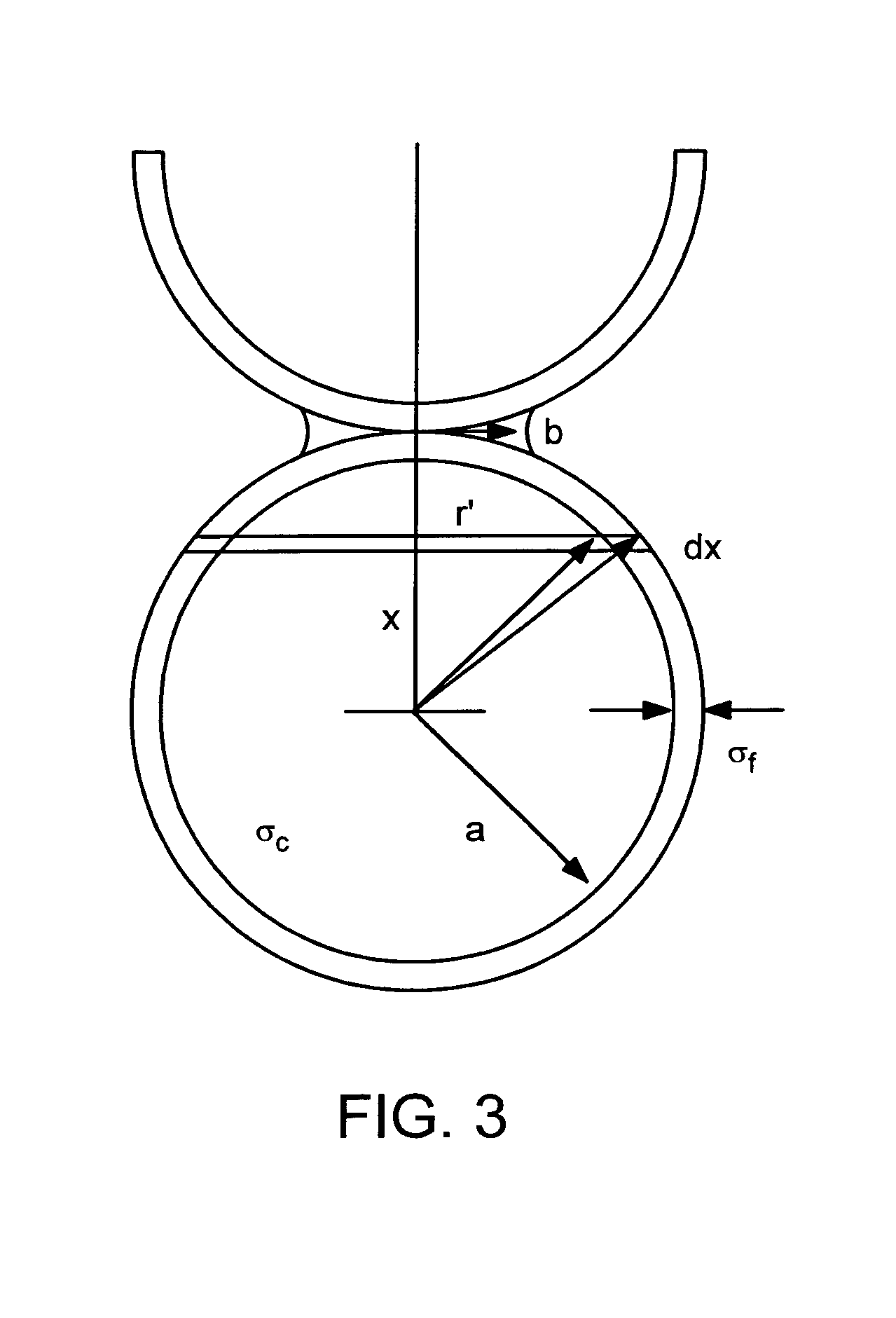Coated electrode particles for composite electrodes and electrochemical cells
a technology of composite electrodes and electrode particles, applied in the direction of cell components, electrochemical generators, manufacturing tools, etc., can solve the problem of repulsive dispersion force between particles of one electrode and particles of the other electrod
- Summary
- Abstract
- Description
- Claims
- Application Information
AI Technical Summary
Benefits of technology
Problems solved by technology
Method used
Image
Examples
example 1
Testing of PEDT-PSS as Conducting Polymer Film
[0124]The efficacy of PEDT as a conducting film for encapsulating LiFePO4 cathode-active particles was tested. Slurries were produced containing 1:10 PEDT-polystyrene sulfonate (“PEDT-PSS”):LiFePO4 by adding the LiFePO4 directly to an aqueous dispersion of the PEDT-PSS. Specifically, 100 mg of Nb doped LiFePO4 was added to 773 mg of a 1.3 wt. % aqueous dispersion of PEDT-PSS. The mixture was manually stirred, sonicated, and magnetically stirred to ensure dispersion of the particles. Films were cast on aluminum foil, which acts as the current collector. The films were dried. These cathode films were then assembled in a conventional battery configuration (with plastic mesh separator and LP30 liquid electrolyte) and cycled versus Li. A first cycle discharge capacity of 72 mAh / g was observed at a rate of 1 / 12 of C-rate. This capacity increased with increasing cycles, reaching 92 mAh / g after 15 cycles.
example 2
Doping of PEDT-PSS with LiClO4 to Increase Electronic Conductivity
[0125]In this prophetic example, 5 wt. % bis(perfluoroethylsulfonyl) imide (BETI, a lithium salt), based on PEDT-PSS solids is dissolved in the aqueous 1.3 wt. % PEDT-PSS dispersion prior to its use as a conductive additive / encapsulant. The incorporation of the lithium salt serves to increase the Li ion conductivity of the PEDT-PSS conductive polymer. BETI is used because it is not readily hydrolyzed, as for example, other dopants such as LiPF6 would be.
example 3
Electrochemical Stability Testing of PEDT-encapsulated Lithiated Cobalt Oxide
[0126]A positive electrode film was prepared by doctor-blade casting of electrode slurry consisting of a PEDT-encapsulated LiCoO2 (3.0 g, provided by Eeonyx Corp.), poly(vinylidene fluoride) (0.3 g, Kynar Flex 741, AtoFina), conductive carbon (0.2 g, Super P, Eurochem), propylene carbonate plasticizer (0.5 g) and acetone solvent (20 ml). The film was densified on a laboratory press at 120° C., the plasticizer extracted with methanol, and the film dried under vacuum. One-cm2 electrode disks were punched out of the obtained electrode film and used to assemble test cells using a highly porous glass fiber disk saturated with a liquid electrolyte solution (1 M LiPF6 in ethylene carbonate: dimethyl carbonate 1:1) as a separator. Disks of metallic lithium were used as a negative electrode. Such test cells were tested galvanostatically by repeated charge and discharge between 3.4 and 4.2 V at a current density of 0...
PUM
| Property | Measurement | Unit |
|---|---|---|
| electronic conductivity | aaaaa | aaaaa |
| Young's Modulus | aaaaa | aaaaa |
| refractive index | aaaaa | aaaaa |
Abstract
Description
Claims
Application Information
 Login to View More
Login to View More - R&D
- Intellectual Property
- Life Sciences
- Materials
- Tech Scout
- Unparalleled Data Quality
- Higher Quality Content
- 60% Fewer Hallucinations
Browse by: Latest US Patents, China's latest patents, Technical Efficacy Thesaurus, Application Domain, Technology Topic, Popular Technical Reports.
© 2025 PatSnap. All rights reserved.Legal|Privacy policy|Modern Slavery Act Transparency Statement|Sitemap|About US| Contact US: help@patsnap.com



